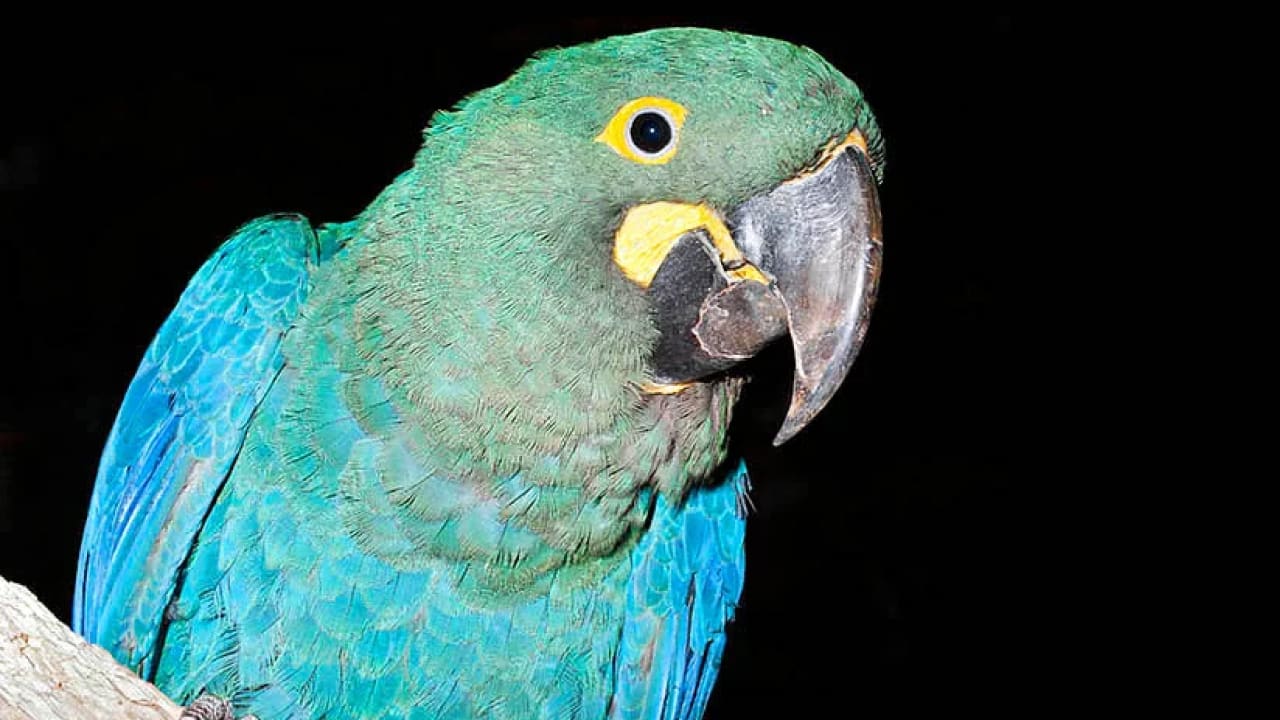Magical Blue Macaw – Incredible Bright Indigo Feathers
You must have heard about and probably seen a blue Macaw, either in the zoo or on TV, or read about them in magazines.
These are some of the biggest color species of the parrot family. Dressed in bright blue features, they look very attractive.
About the Indigo Macaw
They have a yellow circle around their eyes and a solid black beak. These parrots are also referred to as Hyacinthine Macaw.
It is their beautiful and brilliant vibrant plumage that makes them so lovable and attractive. These birds have been kept as pets but can be challenging to live with as they are still wild animals.
| Lifespan | 50 years |
| Scientific name | Anodorhynchus hyacinthinus |
| Family | Psittacidae |
| Class | Aves |
| Mass | 2.6 – 3.7 lbs |
| Length | 3.3 ft |
Native Habitat Hyacinth Macaw
Blue Macaws are native to central and eastern South America. They make their home in the grasslands and forests of the Pantanal region of South America, which lies south of the Amazon River.
Some macaws from the blue family are native to the Amazon Rainforest, specifically, the Scarlet Macaw are the comment. They also exist in eastern Bolivia, southern Brazil, and northeastern Paraguay.
Looks and Appearance of Hyacinthine Macaws
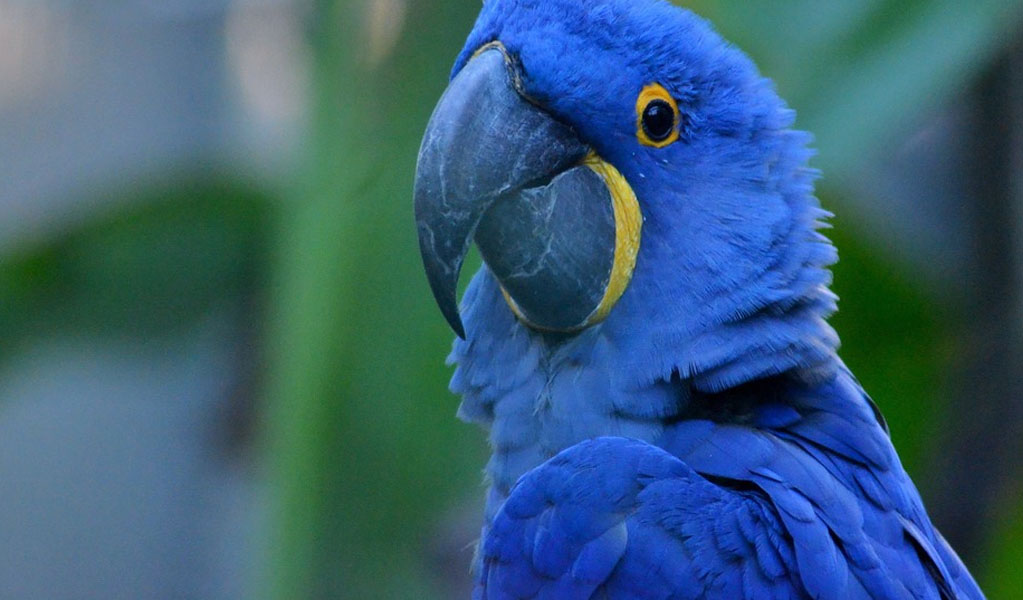
The blue Macaw is about 3.3 ft long and weighs 1.2–1.7 kg. The feathers are bright blue, with a darker shade on its wings and lighter above. The tail is long and pointed and the beak is big and curved and black in color.
Related Pick: Amazon Rainforest Plants and Trees – Top 32
Both males and females look identical and the juveniles too resemble the adults, except that they have shorter tails and paler faces. Macaws have 4 toes that help them climb trees, perch on branches, and hold food.
What do They Eat?
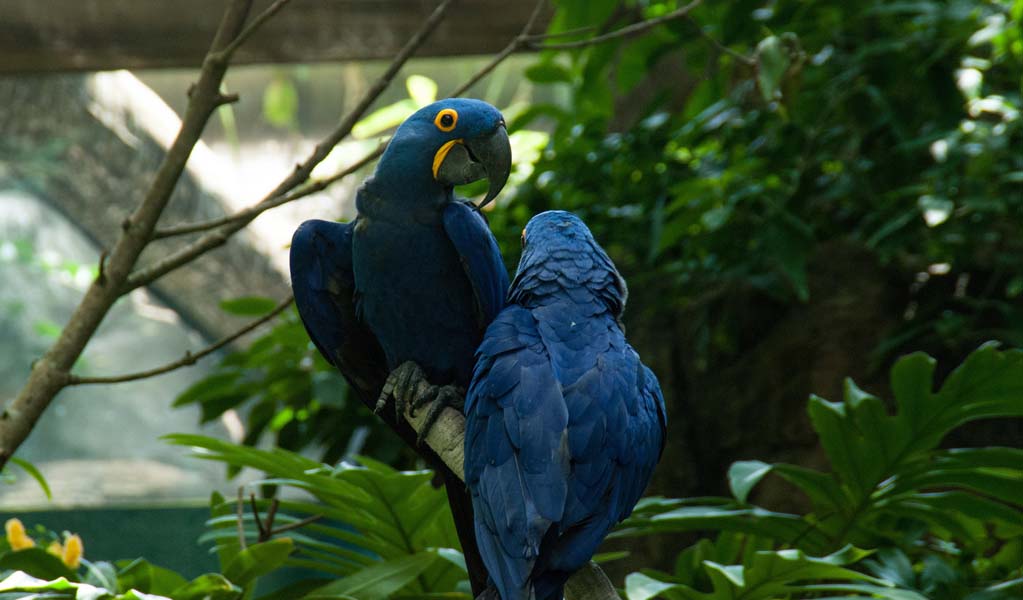
Macaws love eating nuts but they also eat fruits and vegetables. They use their big beaks to crack open nuts, seeds, and even coconut and macadamia nuts.
Hyacinth macaws need more fat in their diet as compared to other parrot species. They also enjoy eating berries, fruits, stems, and flowers apart from nuts.
These birds also feed on insects and snails. Some species are also known to eat damp soil.
How do Royal Macaws Behave?
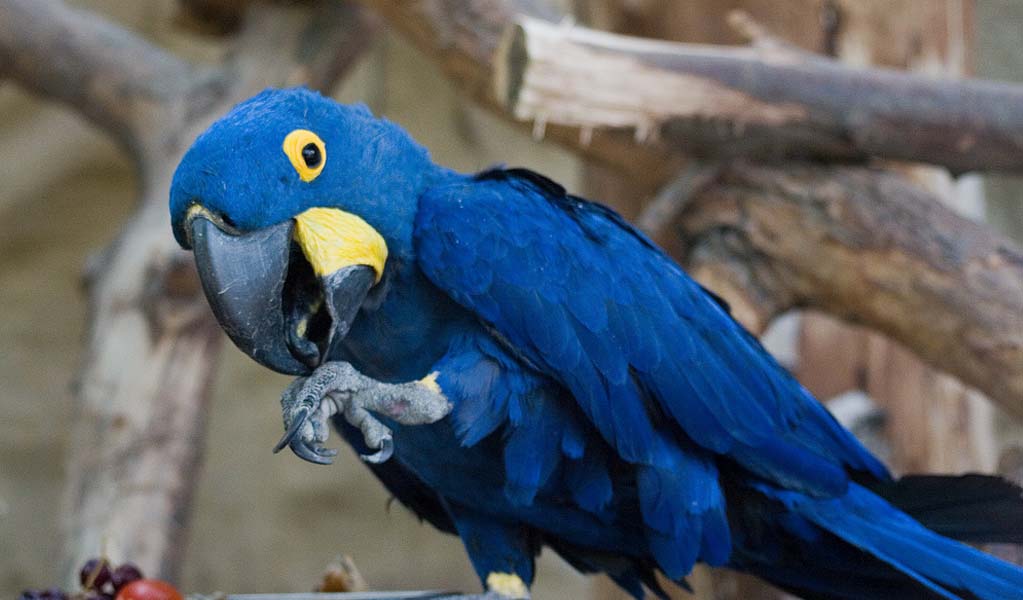
Blue Macaws are intelligent and social birds and often live together in flocks of 10 to 30. You can hear their loud calls and screams echoing through the forest.
Related Pick: Macaw as a Pet: Everything You Need to Know!
These parrots communicate within the flock, so as to help identify each other. They sleep in the trees at night and fly long distances during the day to find food.
They also eat wet soil sometimes to neutralize their fruity diet. These birds are very intelligent and make use of their toes as tools to climb and grasp objects.
The clutch size of these parrots is one or two eggs but only one fledgling survives usually. The chicks are dependent on their parents for 6 months of age and after that, they leave the nest.
Status of Sapphire Macaws
There are 18 species of Hyacinth Macaw but many of them are at risk of extinction. These colorful birds are illegally traded and domesticated like the blue and gold macaw, blue spix macaw, and blue and yellow macaw.
With the rainforests disappearing fast, some of the species are already extinct.
More than 10,000 birds are taken from the wild every year. Mechanized agriculture and cattle ranching are making their habitat shrink at an alarming rate.
Related Pick: The Blue Macaw Extinction
Some of these regions are now unsuitable for macaw habitation. The Blue Macaw is under protection by law in Brazil and Bolivia under the Hyacinth Macaw Project.
World Wildlife Fund and Minnesota Zoo are managing these projects.
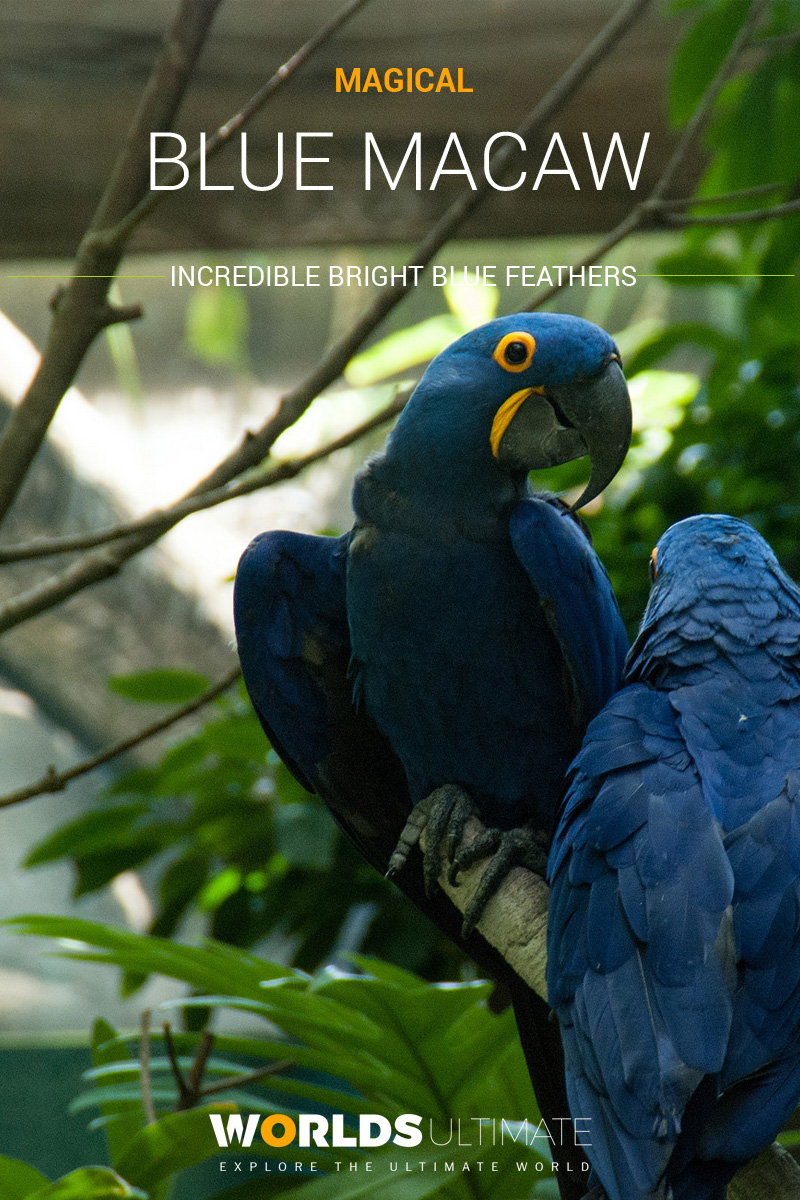
Interesting Azure Macaw Fact
Here are some interesting facts about Blue Macaws:
• Blue macaws are sold for lots of money as they are highly prized as pets.
• They are an endangered species due to hunting and trapping.
• They suffer from hunting for those mesmerizing blue feathers.
• The wingspan is more than 16 inches.
• They can mimic humans.
• The bird has only one mate and stays with it for life.
• Can fly at 35 miles per hour.
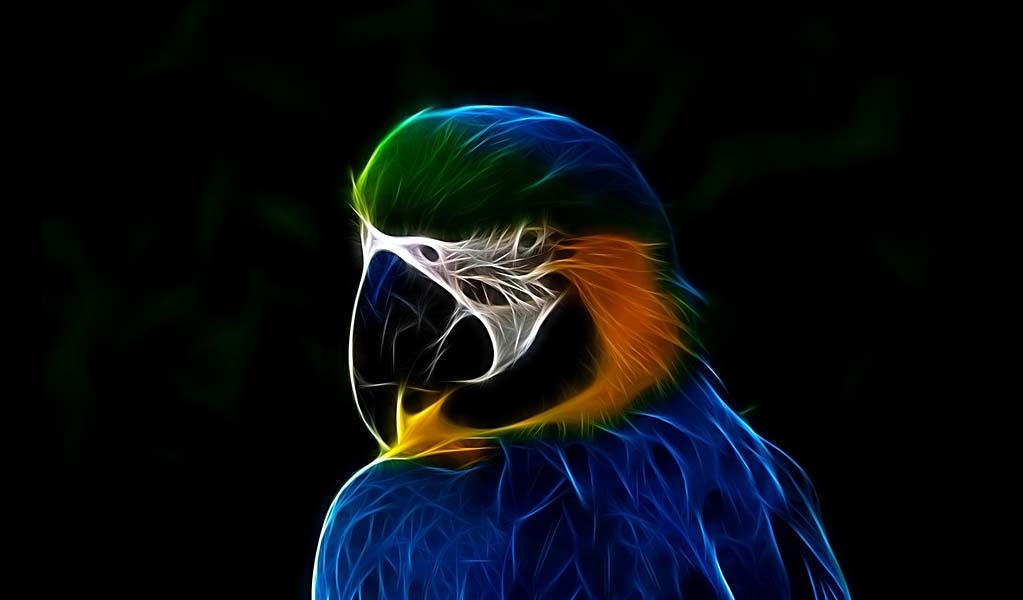
Take Aways
To sum it up, the Blue Macaws, especially the Hyacinthine Macaw, live in a fascinating world full of color and challenges.
These birds, dressed in bright blue feathers with a touch of yellow, aren’t just pretty to look at—they also show us a story of trying to survive tough times.
Originally from the grasslands and forests of South America, their homes are in danger because of people clearing land, illegal trading, and our growing impact on nature.
With a unique lifestyle of having only one partner, a wide wingspan, and the ability to copy human sounds, the Blue Macaw is sadly at risk. This situation reminds us that we need to work together urgently.
As we think about the incredible world of the Blue Macaws, we need to value and defend not just a type of bird but a beautiful part of life on our planet.
Read More: Tropical birds of the Amazon

